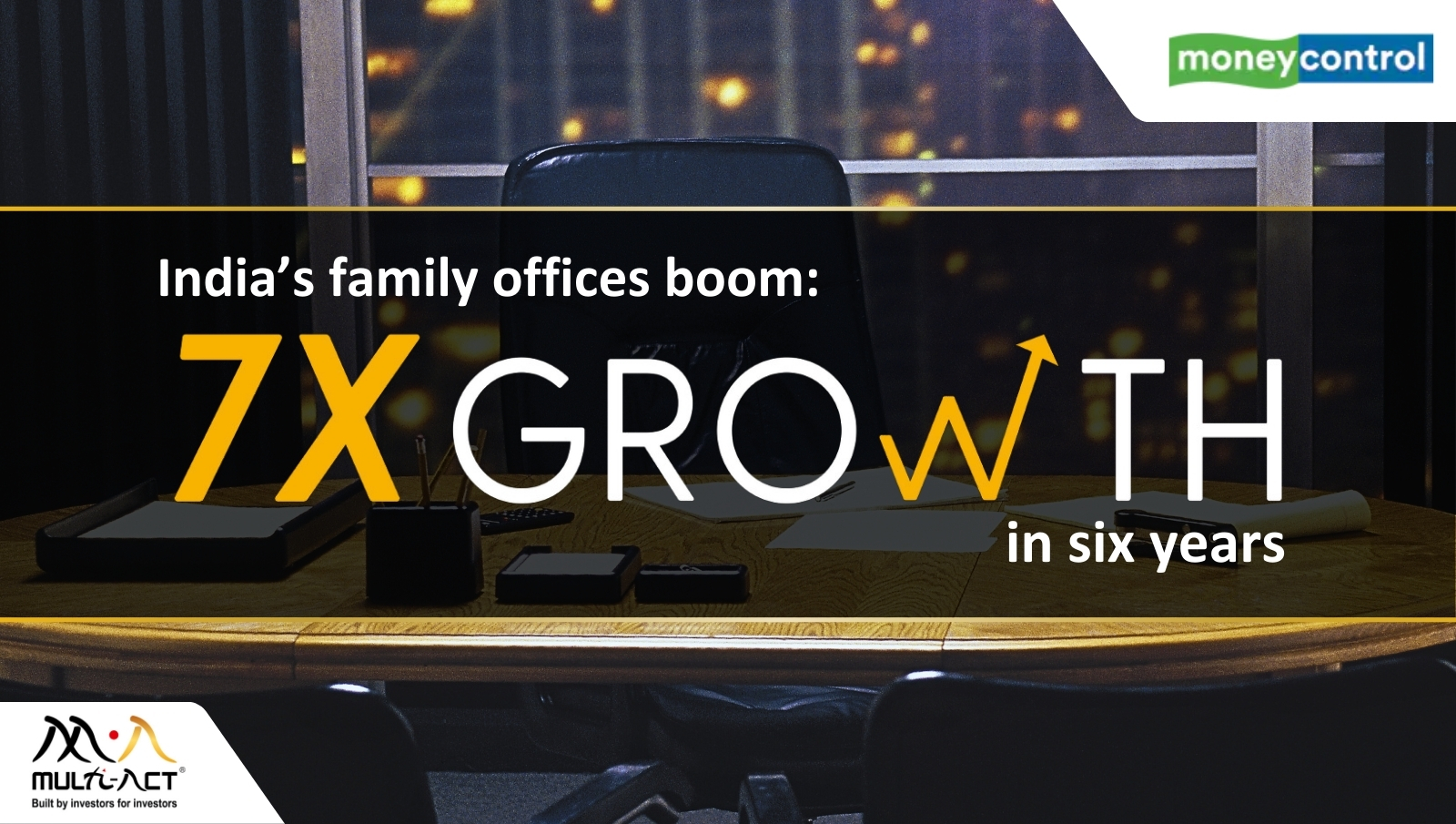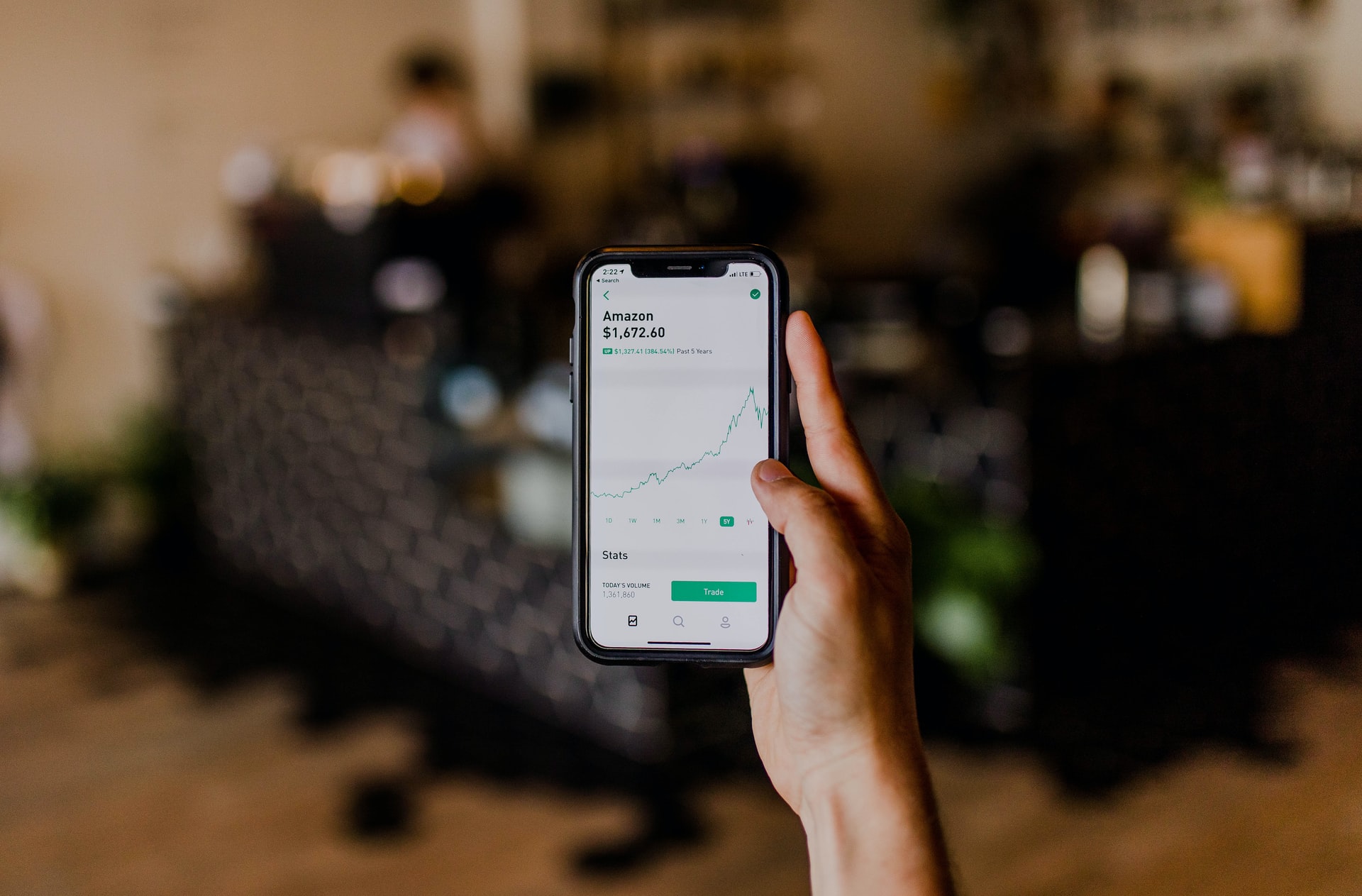
India’s family offices boom: 7X growth in six years
Money Control features Ashutosh Bishnoi, Director at Multi-Act, as he underscores a significant shift in family wealth … Continued
Read more17 November 2021

As the heading seems to suggest, its indeed getting riskier (volatility wise) to continue to believe in theory (and practice) of ‘there is no better alternative to equities currently’, in order to achieve a desired return from a portfolio.
In 2016, a WSJ article covered the below mentioned graph of how a ‘target return’ portfolio of institutions (US Pension Funds or Endowments etc.) would change its composition over time in view of downward sloping interest rate cycle (impact of Central Banks’ ‘Santaseque’ liquidity tap policies) over last 2 decades or so.

What is interesting to note is though in order to achieve the target return as observed 2 decades ago, portfolio constituents are estimated to have changed drastically and while now included various non fixed income asset classes, the Risk, as represented by Standard Deviation of the resultant portfolio was meaningfully higher in contrast to a fixed income dominated portfolio back in 1995.
Recently, another investor/advisor presented a similar themed analysis covering a period of last 40 years (1981-2021) focusing on Asset Class Mix of portfolios of such institutions to achieve a target return of 7.5%. Here they focused on 4 asset classes vis. 3-M Treasury Bills, 10-Y Treasury Bonds, Corporate Bonds and Equities (S&P 500) in USA.
As the charts below suggests a massive transformation of the portfolio composition over time, the volatility curve has jumped significantly because of such ‘riskier transformation’.
What it seemed to convey is that in a world where there is effectively ‘no income in fixed income’, investors will have to either imbibe inherently higher risk to achieve a ‘target return’ or else should accept lower portfolio returns, going forward.


Both the above analytics/studies are based on prevailing interest rate scenarios on different dates and more importantly an expected long-term trend return from equity market (and its sub-segments).
Not to forget that said expected return analysis doesn’t even consider the non-linear nature of equity returns or heightened valuation risk on a particular date, as seen in equity markets currently or the underlying credit risk of non-sovereign bonds etc.
For e.g. the above article does mentions that if one were to assume lower equity market returns (say 8% and not 10% as was assumed earlier), the mix changes as below (10 Debt:90 Equity!):

Which brings us to a question, what about India?
We thus tried doing a similar analysis in Indian context for last 20 years or so.
For the purpose of constructing the similar graph, we used Nifty 50 Index as proxy for ‘Equities’ and used G-Sec yields prevailing on different days as proxy for fixed income investments. We have assumed a 11% target return portfolio for India.
We have used long term Nifty total returns @ 13% (~trendline returns since 1991, post liberalization) and 5Y G-Sec rates on each day for assuming fixed income segment returns in a portfolio. For volatility measure we have used LT average volatility of Nifty = 24% for Equity side and for Debt side of it we have used LT average volatility of Kotak Gilt Fund (long history G-Sec fund) =6% and applied in proportions of Equity and Debt allocations needed to meet the target 11% return criteria (with preference obviously being fixed income as first port of call).
As can be seen in the chart below, Equity allocation required to meet a target return of 11% from the portfolio has reached to ~73% with balance 27% only allocable to fixed income (5Y G-Sec). The risk curve of such a target return portfolio appears to be at one of the highest levels across its history in last 20 years.

One can argue that India has had its own economic challenges, different inflationary conditions, interest rate cycles, perennial fiscal deficits etc. in past and thus might not necessarily had to mirror/follow the policies of developed markets like US. While that’s true but we are increasingly seeing similarly accommodative stance and low interest rate environment in India as well (further impacted by Covid induced measures), resulting into ‘equity tilt’ in portfolios (if targeting low double-digit returns) and thus the higher implied volatility of such portfolio(s).
While recency bias of equity outperformance creates a circuitous loop in favour of equity exposures, its only prudent to remember here that in context of such target return portfolios, Equities, while offering better long term returns than fixed income, also brings higher risks in form of:
One should also keep in mind that central bank largesse’s, just like any other ponzi scheme, will end one day or will cease to be of any incremental impact on interest rates etc. We thus believe that it’s a question of not if but when either one of the two (Equity or Fixed Income) or both, gets repriced correctly, bringing the risk to more acceptable and judicious levels.
To conclude on a lighter note, just like the recent confounding pronouncements by central banking authorities essaying “Transformative spending increases of $1.75 trillion will bring inflation down”, some enthusiastic late-stage market participants might have taken it one notch higher in form of mistakenly believing ‘Transformative increases in equity exposures will bring the risk in portfolio down’…
To rational minds, choice is and should be straight forward, embrace higher risk or accept lower returns for some time.
Happy Investing!

Money Control features Ashutosh Bishnoi, Director at Multi-Act, as he underscores a significant shift in family wealth … Continued
Read more
As India’s affluent class expands, luxury markets are experiencing unprecedented growth. With a remarkable increase in wealth, … Continued
Read more
Curious about market dynamics? Explore how Foreign Institutional Investors (FIIs) and Domestic Institutional Investors (DIIs) influence Indian … Continued
Read moreReceive monthly updates by signing up to our newsletter.
|
Sr. No. |
Received from |
Pending at the end of last month |
Received |
Resolved* |
Total Pending # |
Pending complaints > 3 months |
Average Resolution time^ (in days) |
|
1 |
Directly from Investors |
0 |
0 |
0 |
0 |
0 |
0 |
|
2 |
SEBI (SCORES) |
0 |
0 |
0 |
0 |
0 |
0 |
|
3 |
Other Sources (if any) |
0 |
0 |
0 |
0 |
0 |
0 |
|
|
Grand Total |
0 |
0 |
0 |
0 |
0 |
0 |
* Inclusive of complaints of previous months resolved in the current month.
# Inclusive of complaints pending as on the last day of the month
^ Average Resolution time is the sum total of time taken to resolve each complaint in days, in the current month divided by total number of complaints resolved in the current month.
|
Sr. No. |
Month |
Carried forward from previous month |
Received |
Resolved* |
Pending# |
|
1 |
April, 2024 |
0 |
0 |
0 |
0 |
|
2 |
May, 2024 |
0 |
0 |
0 |
0 |
|
3 |
June, 2024 |
0 |
0 |
0 |
0 |
|
4 |
July, 2024 |
0 |
0 |
0 |
0 |
|
5 |
August, 2024 |
0 |
0 |
0 |
0 |
|
6 |
September, 2024 |
0 |
0 |
0 |
0 |
|
|
Grand Total |
0 |
0 |
0 |
0 |
*Inclusive of complaints of previous months resolved in the current month. #Inclusive of complaints pending as on the last day of the month.
|
SN |
Year |
Carried forward from previous year |
Received |
Resolved* |
Pending# |
|
1 |
2020-21 |
0 |
0 |
0 |
0 |
|
2 |
2021-22 |
0 |
0 |
0 |
0 |
|
3 |
2022-23 |
0 |
0 |
0 |
0 |
|
4 |
2023-24 |
0 |
0 |
0 |
0 |
|
|
Grand Total |
0 |
0 |
0 |
0 |
*Inclusive of complaints of previous years resolved in the current year. #Inclusive of complaints pending as on the last day of the year.